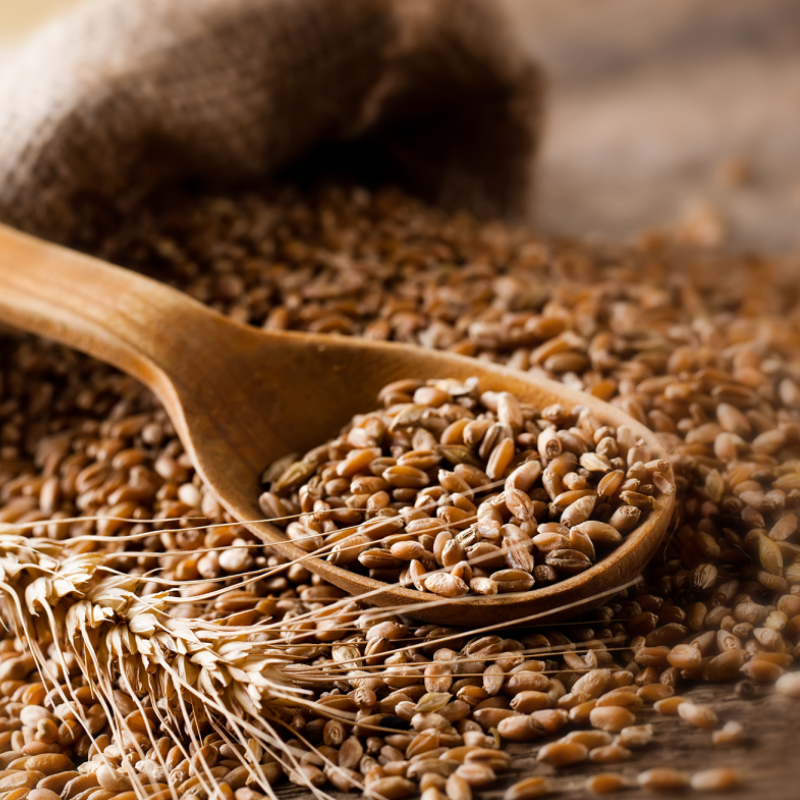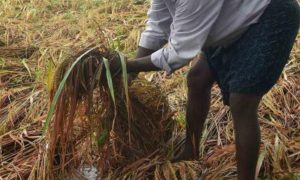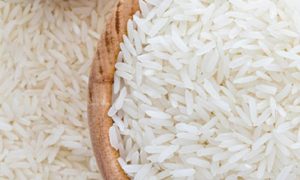Madhya Pradesh ranks second in India in stubble burning, farmers unaware of government schemes

Madhya Pradesh ranks second in the country in terms of wheat production, which is a matter of pride for the state. However, the state also ranks second in stubble burning, which takes the sheen off the achievement. In the last few years, the instances of stubble-burning have gone up, which not only impacts the quality of air and soil, but also leads to a shortage of fodder for cattle.
Instances of stubble burning in north India are common during the winter season. However, many such instances are also reported in Madhya Pradesh (MP), in central India, in April and May and these have been increasing year after year.
Right after harvesting the wheat crop, farmers start burning the stubble. Despite the many appeals made by the administration and the existence of many government schemes to prevent it, the practice continues.
This year too, soon after the wheat harvest, instances of stubble burning were reported. According to the data obtained from the Indian Council of Agricultural Research (ICAR), between January and May 2023, 20,998 instances of stubble-burning were reported in the state — with 16,101 cases in April alone. Comparatively, in the first four months of 2020, 28,855 stubble burning instances were reported and in 2021, 26,515 instances were recorded.
MP ranks second in the country in terms of stubble burning while Punjab tops the list. In 2020, 92,922 instances were reported in Punjab. In MP, this number stands at 49,459 for 2020. From June 2020 to May 2021 92,849 instances of stubble burning were reported in Punjab; while the number stood at 41,538 in Madhya Pradesh. Between July 2022 and June 2023, 63,390 instances were reported in Punjab and 33,122 instances were reported in MP in the same period.
The increase in stubble-burning instances is affecting the air quality of the state. In the last few years, there has been an increase in air pollution in these areas. The farmers say that they have no other option but to burn the stubble. They remark that the government has not provided them with any solution to the problem and the alternative methods are proving to be too costly for small and medium farmers.
Wheat production and stubble burning
MP is one of the leading states in India in terms of wheat production, second only to Uttar Pradesh (UP). In 2020-21, the state had produced 17.62 million tonnes (MT) of wheat, which is 16% of the country’s total production (109.52 MT). In 2019-20, the number rose to 19.61 MT.
Uttar Pradesh (UP) produced 35.50 MT of wheat in 2020-21, and in 2019-20, the figure stood at 33.82 MT. Despite almost double the production, the instances of stubble-burning in UP are found to be much less as compared to MP. There have been 8,345 instances in UP between January and April this year, out of which the maximum, 6,250, were reported in April.
Harvesting early to sow new crops
Dharmendra Patidar, a resident of Vidisha district, attributes this problem to the increasing use of harvesters in wheat cultivation and the haste in sowing the new crop.
“Earlier, the farmers used to sow one crop in a year. The weeds and crop residues would rot and get mixed in the soil. Also, earlier people would reap the crop by hand, which would allow them to cut right at the bottom. They would use the remaining portion—that is, the stubble— as fodder for cattle,” says Patidar.
He adds, “Some people lack the knowledge about the negative impacts of stubble-burning. The second reason is that people think that the sooner we burn the stubble, the sooner we can prepare the fields for the next round of sowing.”
Singhraj Baghel, another farmer from Vidisha, says that ploughing stubble and mixing it with the soil is a traditional way of enhancing the soil’s fertility. But for this, farmers would have to wait for about three to four months after harvesting the crop.
“We have to wait for the rains for the stubble to rot and this process goes on till July or August. Since the sowing time for soybean is also around July, many farmers prefer to clear their fields by burning the stubble,” explains Baghel.
Sandeep Prajapati, a farmer from the district of Dewas, sows soybean after the wheat harvest. Due to the weeding of wheat, soybean seeds do not reach the ground properly. So, he argues that the burning of weeds is necessary for most farmers. According to Prajapati, the government has not provided any concrete solution to this problem. While admitting that stubble-burning damages his fields, he also rues that there is no other option.
Limited information about government schemes
Punjab, the most affected state with the issue of stubble burning, has introduced Pusa capsules, biomass power plants and Happy Seeder, to help the farmers. However, the farmers of MP are not aware of any such state-based initiatives or schemes.
In November 2022, the MP Cabinet decided to implement the Crop Residue Management Scheme to discourage the practice of stubble burning, increase agricultural mechanisation and conserve soil moisture. As a part of this scheme, the state government decided to provide subsidy on farming equipment used for treatment of crop residue and this initiative is called Krishi Yantra Yojana.
Subsidies will be made available to the farmers for their purchase by marking useful power-driven agricultural machinery. A 50% subsidy will be given to minor, marginal, female, SC and ST farmers, whereas a 40% subsidy will be given to the rest. The Directorate of Agricultural Engineering will implement the scheme.
However, many farmers Mongabay India spoke to said they were not aware of any such government scheme.
Bhagwan Meena, agricultural economist and the founder of Kisan Swaraj Sangathan, states that the subsidy provided via this scheme is insufficient. He says, “A 50% subsidy for agricultural machinery is not enough. The cost of a rotavator is about Rs 1.25 lakh and it can be used only for weeding. It is not used in agriculture and in any other activity. In such a situation, it would be very difficult for a farmer to make such a huge investment.”
Meena also expresses concerns over the number of farmers being chosen for the subsidy. According to him, all the farmers who apply for subsidies under this scheme do not get its benefit. Only about 10% of the farmers who apply get the subsidy, which is not a just mechanism.
Rajeev Chaudhary, Director, Directorate of Agricultural Engineering, explains, “We have an online portal through which we provide subsidies to farmers. It is a fully online process, in which we take applications with Aadhaar card details.”
When asked about the lack of awareness among farmers about the scheme, Chaudhary responds that farmers also get subsidies on agricultural equipment through some other schemes and in such a situation, they do not pay attention to the name of the schemes. “Farmers do not understand specific schemes. If there are four to five schemes in the portal, the farmers don’t necessarily know which scheme entails what benefits,” he says.













